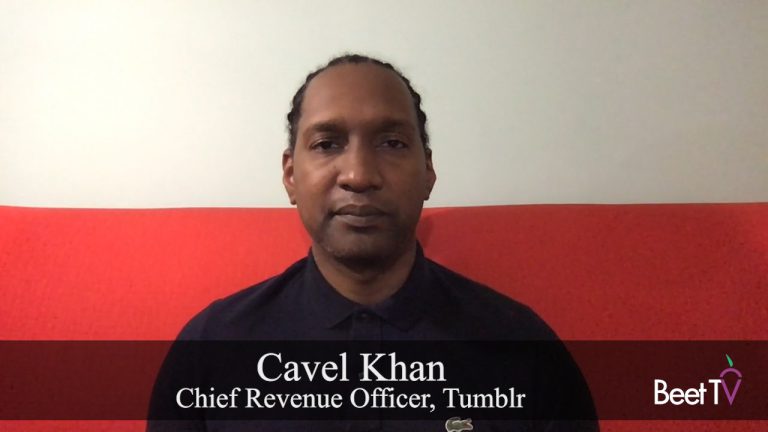
Any acquirer of a community with deep engagement and intensely loyal users had better tread carefully.
And that’s exactly what Cavel Khan is doing. He is the new chief revenue officer of Tumblr, the blog network acquired by WordPress owner Automattic a year ago.
Tumblr had been acquired by Yahoo for $1.1 billion in 2013 with big ambitions of attractive native ad placements. By 2019, Automattic’s acquisition came as something of a rescue for a network that had failed to deliver Yahoo riches.
So, what does Khan have in store? In this video interview, Khan, who recently joined after being SVP of Vice Media’s North America partnerships, explains.
Video on the roadmap
“We definitely have video as part of our offering,” he says. “When you a buy promoted post, you can really use video as part of that.
“But there’s a lot of work that we also have to do on the product roadmap to look at what types of videos marketers care about and making sure that we’re including that in our ad solutions.
“So that’s part of the roadmap. It’s something we’re going to continue to develop and really look at how we’re satisfying the needs for the ways that brands want to tell their story, whether through video GIFs or other sight, sound and motion.”
The site already offers sponsored posts, sponsored video posts and a sponsored day page as ad formats.
Community and commercials
Chief across the offer to advertisers is community. Tumblr has long had some of the most engaged creators and audiences on the internet.
Khan claims the site has 150 million million active monthly users, each displaying the kind of segmented affinity that can really appeal to brands.
“They’re deeply obsessed about that the communities that they’re in on the platform.,” he says. “Advertisers are looking to build connections with consumers. I think there’s a real opportunity and space for Tumblr to be in the marketplace to really figure out how we can solve for brands connecting with consumers.
“We need to find places where consumers are going to authentically engage in a natural way with the stories we want to tell
“Tumblr is all about community. Those communities are similar communities to what brands are targeting.”
Finding engagement
That sort of pitch could put Tumblr in the same sort of frame as Reddit, the vast network of communities that is also now trying to turn that same niche passion and focus as an advertiser pitch.
It’s not that niche publisher sites, of course, haven’t sought out specific audiences in an attempt to find audience engagement.
But there is a growing belief that communities, in which users don’t just read, they actively contribute, can ratchet up that engagement factor.
A place for creativity
Tumblr has been here before. Yahoo’s $1.1 billion acquisition was predicated on a similar idea and had grand ambitions of selling big brands on content marketing campaigns, but it fell somewhat flat and Automattic rescued Tumblr from a possible shut-down.
If Khan is hesitant to yet reveal his revenue plan for the site, Tumblr fans may hope to take that as a positive sign.
And, a year after the acquisition, Matt Mullenwag, the WordPress creator who is CEO of Tumblr owner Automattic, remains cautious about breaking Tumblr’s community ethos.
“I’m very curious to explore if we can make Tumblr not solely dependent on ads, and what incentives that creates for the product to evolve,” Mullenwag says in an interview with The New York Times this week.
“Could that provide a third space, a space where the algorithms aren’t driven to show you the thing that’s going to get you the most riled up? Or the advertising is not targeted in a way that shifts elections?
“The good news is Tumblr is very active. It’s getting 60,000 to 70,000 sign-ups per day from its mobile app. So I think we have an opportunity to create that other place, that could be something that people go to feel that creativity, kind of like Instagram did in its early days.”
“It’s one of my life missions to have more companies be distributed,” Matt Mullenweg said. “It’s good for the environment. It’s good for opportunity. It’s good for the economy.”https://t.co/i7z564PBwd
— The New York Times (@nytimes) July 12, 2020


